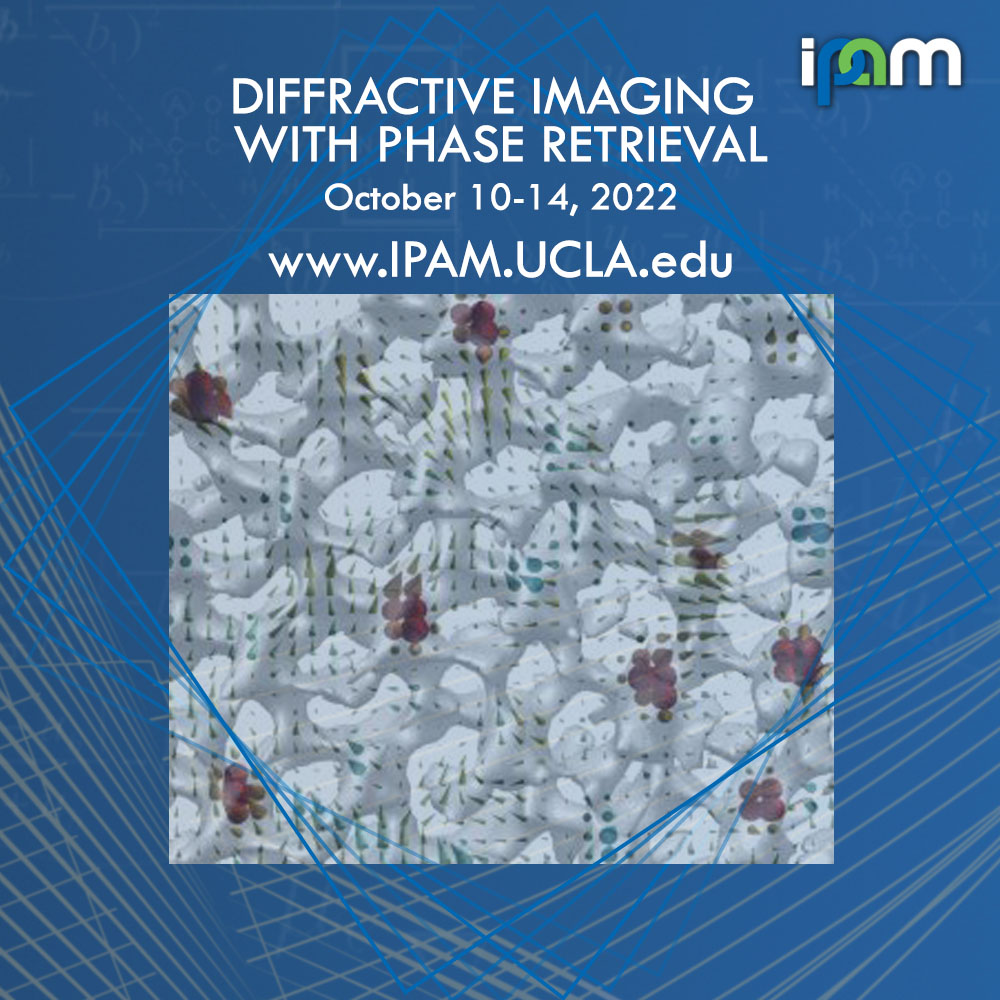Hyunjung Kim - In situ coherent x-ray diffraction imaging study of internal structural deformation
Presenter
October 10, 2022
Abstract
Recorded 10 October 2022. Hyunjung Kim of Sogang University presents "In situ coherent x-ray diffraction imaging study of internal structural deformation during the chemical process" at IPAM's Diffractive Imaging with Phase Retrieval Workshop.
Abstract: Three-dimensional strain-field distribution and crystallographic orientation in nanoparticles are key aspects of their functionalities. Identifying chiral nanoparticles with abnormally tuned morphology in three dimensions is essential for optical, catalytic, and biological applications. In particular, a fundamental understanding of structural changes of the nanocatalysts during catalytic reactions is crucial for revealing underlying mechanisms and optimizing efficiencies. Surface energy and related catalytic mechanisms in reactants, intermediates, and products are widely studied. However, it remains challenging to characterize the strain and defect evolution for nanocrystal catalysts in situ. Bragg coherent diffraction imaging (BCDI) is a powerful tool for investigating structural changes inside the crystal in-situ non-destructive way. In my presentation, we show how the atomic level of interaction of reactants affects the nanoparticles and nanoporous zeolites as strain-induced and defect dynamics during the catalytic process by exploiting the merits of BCDI. These observations provide insights into the role of structural inhomogeneity in metal nanoparticles and zeolites during catalysis and will assist the future design of catalysts for their applications. We also present a new methodology for identifying the 3D information of chiral gold nanoparticles with highly concaved gaps. The distribution of the high-Miller-index planes constituting the concave chiral gap was determined using this methodology. The highly strained area adjacent to the chiral gaps was resolved and correlated to the 432-symmetric geometry of the nanoparticles. Further, this analysis was carried to each growth stage of the chiral nanoparticles, from chiral seeds to completed chiral nanoparticles, revealing the pathways of chirality emergence via enantio-selective interaction with ligands. It provides the 3D crystallographic and strain-field distribution of the nanoparticles to the fields where complicated structure and local heterogeneity are crucial, such as plasmonics.
This research was supported by the National Research Foundation of Korea (NRF-2021R1A3B1077076).
Learn more online at: http://www.ipam.ucla.edu/programs/workshops/workshop-i-diffractive-imaging-with-phase-retrieval/?tab=schedule
